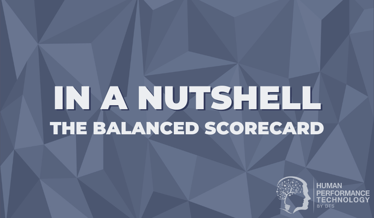In a Nutshell: Strategic HR Business Partnering (Ulrich Model)
As a business function, HR has undergone perhaps more introspection and debate about its title, role, structure, and value than virtually any other department in the annals of business.
Background
For several decades, a major discussion point for HR has centred around earning a ‘seat at the table’—that is, how to become a part of the senior management team and play a key role in shaping (not just executing) people strategies that are linked to high-level business objectives.
The administrative activities that had formed the bedrock of the HR function in the past are now increasingly being outsourced and automated, with line managers being asked to take on more people responsibilities. HR departments that were previously integrated as a single, large team of generalists, specialists, and administration staff (the traditional HR model) have been decreasing in size, which has left many wondering about the future of the profession. It is within this context that HR has been under pressure to evolve from a bureaucratic, operationally focused function to a fully fledged strategic support function based on a consultancy approach (i.e., HR as a trusted advisor more than a policy officer).

One of the most prominent supporters of HR’s mission to achieve strategic prowess and demonstrate its value to stakeholders has been Dave Ulrich, a professor of business at the University of Michigan. Ulrich, the author of more than 25 books, is widely considered to be the most influential thought leader in HR. The idea of ‘strategic HR’ was popularised by Ulrich in his seminal work Human Resource Champions (1997).
The bulk of the content in Human Resource Champions concerns ‘four key roles that HR professionals must fulfil to make their business partnership a reality’. These four roles are: Administrative Expert; Employee Champion; Change Agent; Strategic Partner. The last role laid down the initial groundwork for what would become known as the HR Business Partner (HRBP), a term that is now in widespread use (often directly attributed to Ulrich even though he did not use this precise phrasing). Ulrich viewed a successful HR business partnership as the sum of all four roles. In Ulrich’s discussion of these four key roles, HR professionals could undertake one or multiple roles at once. Mistakenly, some HR commentators have believed that Ulrich was proposing a blueprint for structuring the HR department with literal job titles (Institute for Employment Studies, 2007).
Human Resource Champions appears to be a central influence on the development of a three-part model for organising the HR function that rose to prominence shortly after the book’s publication. This is known as the ‘Ulrich model’ a.k.a. the ‘three-legged stool’. The Ulrich model, of which HR business partnering is one key aspect, has been widely adopted in large companies all over the world, even though its exact origins are unclear and Ulrich himself has denied inventing the model that bears his name. Ulrich has indicated that the three-legged stool model is not his direct creation but an interpretation by others based on his work. It is thus perhaps more accurately described as the ‘Ulrich-inspired’ model.
In The HR Value Proposition (2005), Ulrich subsequently revised his thinking from four key roles to five: Employee Advocate; Human Capital Developer; Functional Expert; Strategic Partner; HR Leader (Ulrich and Brockbank, 2005). Overlapping with and extending on this revised thinking, Ulrich proposed a new organisational model for HR service delivery, also with five roles: ‘Service Centres, Corporate HR, Centres of Expertise, Embedded HR, and Operational HR’ (Ulrich, Younger, and Brockbank, 2008).
The fact that Ulrich is not the author of the three-legged stool model, and yet has subsequently provided a five-part model with very close similarities, makes for an interesting development that complicates the history of this model. While later updates and revised thinking by Ulrich are important to acknowledge in order not to provide an oversimplified account, the ‘new’ five-part Ulrich model is not the focus of this analysis. The term ‘Ulrich model’ commonly refers to the popular three-legged stool model of HR service delivery, author or authors unknown, which is the focus here.
The earliest known mention of the ‘three-legged stool’ in relation to HR comes from a 1999 article in HR Magazine that quotes David Holborn, a then associate of the consulting firm Mercer. However, there is evidence to suggest that the three key pieces of the model were already being put into practice in companies during the early 1990s (pre-dating the 1999 article and Ulrich’s Human Resource Champions in 1997).
Overview
The ‘Ulrich’ model, ‘three-legged stool’, ‘three-box’ model, or ‘HR business partnering’ model is a popular, broad-based approach to HR service delivery, which is most prevalent in large, complex organisations made up of numerous business units. The Ulrich model is also commonly described as a basic structure for organising a company’s HR function; companies in practice frequently adapt it to suit their organisational structure.
The Three Components of the Ulrich Model
1. HR BUSINESS PARTNERS (HRBPs)
HRBPs function as ‘internal consultants’ to senior leaders and/or line managers. HRBPs are typically embedded within specific business units where they serve as HR generalists to managers and their staff, providing both strategic and non-strategic HR advice and support, depending on the specific needs of the business unit. HRBPs are often viewed as the interface or liaison between managers and the services, systems and expertise housed under the broader HR function.
2. CENTRES OF EXCELLENCE / CENTRES OF EXPERTISE (CoE)
Centres of expertise are relatively small teams of experts with specialist HR knowledge who work together to develop and promote best practices in their area of expertise. These often include learning and development, compensation and benefits, employee relations, organisation development, change management, and recruitment.
3. SHARED SERVICES / SHARED SERVICE CENTRES
Shared services is a separate, often relatively large business unit that handles certain types of similar administrative activities for other business units. For example, instead of having activities like payroll and the monitoring of leave carried out across multiple office sites, shared services consolidates and centralises the activity through a single processing point. Shared service centres take many forms. They could involve HR-specific transactions or be combined with other functional transactions (IT, finance, procurement, etc). They could be located onshore or offshore, set up and managed in-house or outsourced to a third-party provider, and serve business units regionally or globally. Often associated with shared services are self-service portals/intranets and, for more complex enquiries, help desks that staff can call. Some companies charge a fee for service back to the business unit, while other companies incorporate the cost of running the shared services operation into their general running costs.
This article offers an expanded description of the summary listed in our post 40 Must-Know HR, OD, L&D Models.

Theo Winter
Client Services Manager, Writer & Researcher. Theo is one of the youngest professionals in the world to earn an accreditation in TTI Success Insight's suite of psychometric assessments. For more than a decade, he worked with hundreds of HR, L&D and OD professionals and consultants to improve engagement, performance and emotional intelligence of leaders and their teams. He authored the book "40 Must-Know Business Models for People Leaders."

.png?width=374&name=Nutshell%20-%20Appreciative%20Inquiry%20(4-D%20Cycle).png)

We Would Like to Hear From You (0 Comments)